- Aug 26
- Sep 09
- Sep 16
- Sep 23
- Sep 30
- Oct 07
- Oct 14
- Oct 21
- Nov 04
- Nov 11
- Nov 12
- Nov 18
- Dec 09
- Dec 10
- Dec 17
- Jan 07
- Jan 14
- Jan 26
- Jan 28
- Feb 04
- Feb 23
- Mar 30
- Apr 27
- May 25
- Jun 29
Modeling groundwater in the High Plains (Ogallala) Aquifer: Past, present, and future
Main Speaker: Erin Haacker
Assistant Professor , UNL | Earth and Atmospheric Sciences
Date: 8/26/2020
Time: 3:30 PM
Location: Zoom Webinar
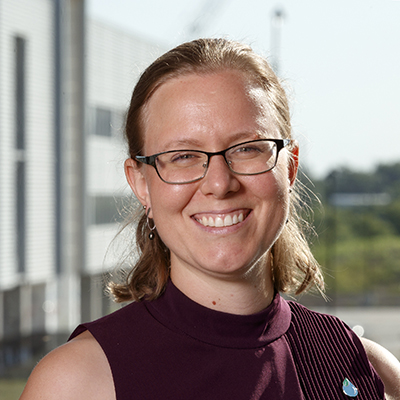
Abstract
Scientists rely more and more on models to answer questions about natural resources, but how are these models made, and how are they related to data, let alone reality? This talk will cover some of the advances in computational methods for groundwater research, and give an overview of the trajectory of the High Plains (Ogallala) Aquifer, the largest freshwater aquifer in North America.
Speaker's Bio
As a doctoral student, Haacker participated in a large, interdisciplinary collaboration studying the High Plains Aquifer in Texas. She used models linking groundwater, surface-water, economics, atmosphere and other factors. Haacker combines the modeling of groundwater and surface-water interactions with statistical data analysis. Her skills include integrating tools such as GIS (Geographic Information Systems) and Python, a cross-platform, open-source programming language, to improve models. She is interested in groundwater management, especially in terms of profit and risk. Haacker likes to ask thought-provoking questions such as how people adapt to natural resources and how that can be represented in physical and statistical models.
A Nebraska native, Haacker was raised in Washington State and moved to Montana. In early 2019, Haacker accepted a faculty position in UNL’s Department of Earth & Atmospheric Sciences, where she plans to capitalize on the skills and knowledge she gained at NWC.
Digging deeper: persistence and climate sensitivity of deep soil organic matter.
Main Speaker: Asmeret Asefaw Berhe
Professor , Univeristy of California-Merced | Department of Life and Environmental Sciences
Date: 9/9/2020
Time: 3:30 PM
Location: Zoom Webinar

Abstract
Deep soil layers (below 30cm or A-horizon) account for up to 70% of the carbon (C) stored in soils. Decomposition of deep soil organic matter (SOM) contributes to surface carbon dioxide efflux, and is controlled by climate, soil physico-chemical properties, and geomorphology of the landscapes and associated hydrology. This presentation will include synthesis of our past and ongoing projects on deep SOM dynamics, including SOM in weathered bedrock and how climate regulates SOM storage, chemical composition, persistence, and stabilization mechanisms using results from the NSF funded Southern Sierra Critical Zone Observatory, and agricultural systems in California. Our work contributes to improve our understanding of mechanisms that control deep SOM persistence and ability to predict the vulnerability of soil carbon to climate change.
Speaker's Bio
Asmeret Asefaw Berhe is a Professor of Soil Biogeochemistry at the Department of Life and Environmental Sciences, University of California, Merced. Asmeret does research in Soil Science, Biogeochemistry, Global Change Science, and Political Ecology. Currently Asmeret and her research team are studying the role of erosion in biogeochemical cycling of essential elements; effect of fire on soil organic matter transport and overall dynamics; deep soil organic matter dynamics; and coupled hydrologic and biogeochemical responses to climate change.
Speaker's Contact Information
- aaberhe@ucmerced.edu
Video
Black Environmentalists Matter: Culturally Relevant Approaches to Environmental Programming and Curricula
Main Speaker: Tatiana Height
Program Director, Partners for Environmental Justice and
Doctoral Candidate, Agricultural and Extension Education, North Carolina State University
Date: 9/16/2020
Time: 3:30 PM
Location: Zoom Webinar

Abstract
For many years, scholars have commented on the whiteness of the environmental education sphere and the natural resources profession more broadly. However, many approaches to address this have focused on program availability more than cultural relevance. This talk will cover the ways in which this problem has surfaced in recent years and approaches that can be taken to address it.
Speaker's Bio
Tatiana Height is a Chicago native and two-time Cornhusker alumna. Tatiana received a Bachelor of Arts degree in Great Plains Studies with minors in Environmental Studies, Community and Regional Planning, and Agribusiness Entrepreneurship. As an undergraduate student, Tatiana was a member of the Engler Agribusiness Entrepreneurship Program for 4 years. Tatiana later returned to pursue a Master of Community and Regional Planning degree focusing on community engagement and environmental justice (EJ). At the doctoral level, Tatiana has continued this work and more, at NC State University. Tatiana has also been an Integrated Water Management Planner for the Nebraska Department of Natural Resources, a Community Development Planner for the City of Kinston, NC, and currently serves as the Program Director of Partners for Environmental Justice. Beyond this, Tatiana has several years of experience as an environmental educator and launched Height Environmental Justice & Planning in 2018 to provide public speaking, EJ, environmental education, and planning services to interested audiences.
Speaker's Contact Information
- tcheight@ncsu.edu
Video
Great White Sharks - ocean tracking technologies reveal deep mysteries about one of earth’s most ancient and successful predators.
Main Speaker: Sal Jorgensen
Marine Ecologist, Research Associate , University of California - Santa Cruz
Date: 9/23/2020
Time: 3:30 PM
Location: Zoom Webinar
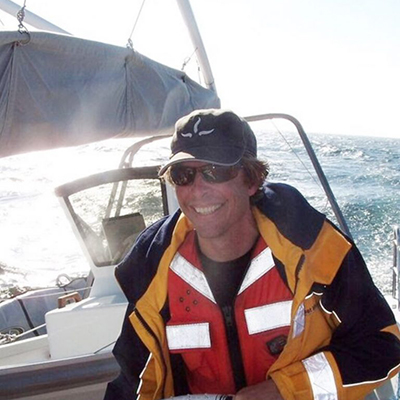
Abstract
As members of one of the most ancient vertebrate lineages, sharks have roamed the oceans for some 500 Million years persisting through multiple global mass extinction events. Great white sharks, one of the largest predatory shark species, are vast ocean travelers and can be found worldwide. Yet the western coast of North America is home to a unique and genetically isolated population of these feared and often misunderstood predators. Today, these ancient creatures concentrate around key areas at the doorstep of California’s most populated metropolitan areas. What they do, below the surface of the opaque waters has been seldom observed, and has largely remained a mystery. This void of knowledge is often colored by our primal fears, and the enduring narrative of Jaws. In this seminar we will look at some of the discoveries and myths dispelled about great white sharks that have resulted from over a decade and half of research and exploration.
Speaker's Bio
Dr. Salvador Jorgensen is a marine ecologist and former Senior Research Scientist at the Monterey Bay Aquarium, and recently joined UC Santa Cruz as a Research Associate. Jorgensen’s research focuses on the ecology, migration and population dynamics of pelagic fishes and elasmobranchs. He has conducted research in a range of systems from kelp forests, to seamounts, to the open ocean. Jorgensen holds a B.A. in Environmental Studies from Sonoma State University and a Ph.D. in Ecology from U.C. Davis where he worked on the design of California’s Marine Protected Areas with the Science Advisory Team under the California Marine Life Protection Act (MLPA). During his Ph.D., Jorgensen was also a Fulbright Scholar in Baja California, Mexico, where he studied the ecological processes of fish species assembly around shallow seamounts, and the use of deep hypoxic habitat by hammerhead sharks. Jorgensen completed a postdoctoral fellowship at Stanford University, where he first became a member of the Tagging of Pacific Predators (TOPP) program as lead researcher on white shark tagging and ecology. Over the past decade, Dr. Jorgensen has continued his work on white sharks and other shark and ray species around the world including South Africa and most recently the Galapagos Islands.
Social Science Perspectives on Ethno-racial Diversity in wildlife Viewing and Conservation
Main Speaker: Jonathan Rutter & Dr. Ashley Dayer
Date: 9/30/2020
Time: 3:30 PM
Location: Zoom Webinar
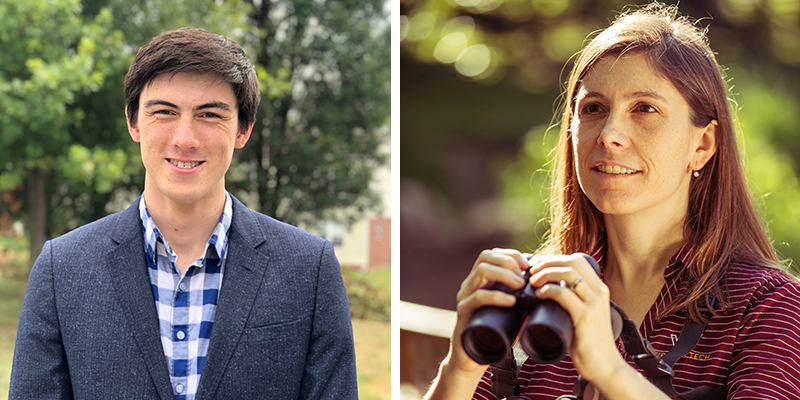
Abstract
At a time when ethno-racial justice has taken center stage in the national conversation, it is increasingly important to consider how themes of diversity, equity, and inclusion apply to wildlife recreation and conservation. In this seminar, we review the importance of ethno-racial diversity in these fields, and the barriers that exist to minorities' participation in outdoor recreation. We then discuss our own research into ethno-racial patterns in the recreation specialization of birdwatchers, based on a study of United States eBird registrants. Finally, we provide a short list of best practices for wildlife organizations, agencies, and academics as they seek to promote diversity, equity, and inclusion through their work.
Speaker's Bio
Jonathan Rutter
Human Dimensions Technician
Jonathan Rutter is a human dimensions research technician in the Department of Fish and Wildlife Conservation at Virginia Tech. He joined the Dayer Lab in October 2018 to study ethno-racial diversity in birdwatching using a large, bi-national dataset. He additionally contributed to the Lab’s effort to produce a wildlife viewing plan for the Virginia Department of Wildlife Resources. His current research focuses on predictors of the public’s engagement in wetland conservation in Missouri. Jonathan graduated from Yale University in 2018 with a B.S. in Ecology & Evolutionary Biology and Environmental Studies, and he will pursue a Master's degree in Biodiversity, Conservation, and Management at the University of Oxford starting in September 2021.
Ashley Dayer
Assistant Professor, Virginia Tech | Fish and Wildlife Conservation
Dr. Ashley Dayer is also affiliated with the Global Change Center and Coastal@VT. She is the Past President of the Social Science Working Group of the Society for Conservation Biology, a global network of 2000 conservation social scientists. Her applied conservation research aims to understand what drives people’s natural resources-related behaviors and how they are influenced by programs and policies. She has extensive experience studying wildlife recreationists, in particular viewers. Her research is well-known for informing agencies’ and organizations’ policies and programs due to her investment in working closely with those who will be applying research. Dr. Dayer holds a Ph.D. in Natural Resources from Cornell University, a M.S. in Human Dimensions of Natural Resources from Colorado State University, and a B.A. in Environmental Science and Public Policy from Harvard University.
Video
Prioritizing Private Lands to Optimize Biodiversity Conservation
Main Speaker: Andrew Little
Landscape and Habitat Management Ecologist , UNL | School of Natural Resources
Date: 10/7/2020
Time: 3:30 PM
Location: Zoom Webinar
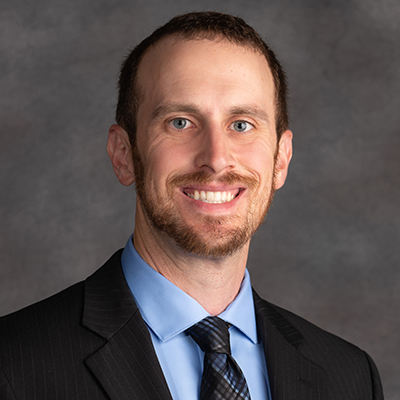
Abstract
Agriculture intensification in the Midwest has resulted in the simplification of agricultural systems (e.g., corn and soybean rotation compared to multi-crop diversity, cover crops, and/or integrated crop-livestock systems), increased field sizes, and removal of non-crop habitat to maximize production. Despite increased farm productivity, rural and urban residents are becoming increasingly affected by multiple emerging and continuing challenges including environmental concerns (e.g., climate variability, soil erosion, water pollution, etc.), economic uncertainties, and declines in rural community vitality. These challenges for increased food production, environmental protection, and economic uncertainties require innovative solutions to achieve resilient agricultural systems. To address these challenges, new local (or field) scale, precision technologies and strategic conservation planning frameworks have been developed to offer opportunities for agricultural producers to maximize whole-field profitability by strategically identifying marginal (or low yielding) acres for cropland diversification, while simultaneously reducing negative environmental impacts. These new precision technologies and strategic conservation planning frameworks also offer natural resource agencies and organizations innovative ways to prioritize enrollment of private lands in conservation programs (e.g., State Acres for Wildlife Enhancement, Conservation Program 33-Habitat Buffers for Upland Birds) with the goal of increasing available wildlife habitat. Implementing these innovative precision technologies and strategic conservation planning frameworks throughout the Midwest will require a collaborative effort among farmers, farmland owners, industry, and local/state/federal/NGO partners to achieve resilient agricultural systems in the 21st century.
Speaker's Bio
Dr. Andrew Little is an Assistant Professor of Landscape and Habitat Management, and Extension Wildlife Specialist at the University of Nebraska-Lincoln (UNL). Dr. Little received his B.S. in Wildlife and Fisheries Science from The Pennsylvania State University, M.S. in Wildlife Ecology from Mississippi State University, and Ph.D. in Wildlife Ecology from the University of Georgia. He is a wildlife spatial ecologist focused on creating innovative solutions to the growing wildlife conservation and management needs in multi-functional landscapes where there are competing interests for agricultural production, wildlife conservation, and ecosystem services.
Video
Reservoir Fisheries
Main Speaker: Cecil Jennings
Unit Leader and Adjunct Professor , University of Georgia | Warnell School of Forestry and Natural Resources | USGS Georgia Cooperative Fish and Wildlife Unit
Date: 10/14/2020
Time: 3:30 PM
Location: Zoom Webinar
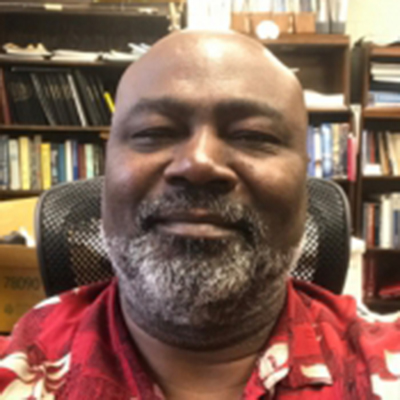
Abstract
As the earth’s climate warms, the persistence of trout in the cool-water regions of Georgia may be threatened. This study focused on how warming stream temperatures from May to September could affect both trout-based recreational opportunities and future suitable thermal habitat availability for trout within the state. We evaluated the potential effects of three hypothetical temperature increases (1°, 2°, and 2.6° Celsius) to predict how each would affect future trout habitat availability and recreational opportunities for trout in Georgia. The amount of stream miles with temperatures cool enough for trout to survive was then overlain with angler preference data to determine where habitat and loss of angling opportunities would be the greatest across northern Georgia. Our results predict that suitable cool water habitat will decline by 33-70% for brook trout and a 30- 68% for brown trout and rainbow trout. Such a decline would result in a loss of angling opportunities for anglers during the summer months. Such a decline in suitable cool water for all three species will be increasingly restricted to higher elevations during summer, where refuge from lethal temperatures is available. These results suggest shifting trout angling seasons to earlier in the year to avoid losing trout fish opportunities during the warmest months of the year.
Speaker's Bio
BA (’81) Biology/Natural Science/Conservation – Carthage Coll. (WI)
MS (’85) Fisheries and Wildlife Ecology – Miss State University
PhD (’90) University of Florida – Fisheries Science
Video
Assessing the Role of Trust and Values in Social Conflict Over Invasive Species Management: A Case Study on Guam
Main Speaker: Dara M. Wald
Assistant Professor of Environmental Communication , Iowa State University | Greenlee School of Journalism
Date: 10/21/2020
Time: 3:30 PM
Location: Zoom Webinar

Abstract
Within the past century, military action, development and the introduction of multiple invasive species have dramatically transformed the natural landscape and forests on the island of Guam. Changes to the forest, including the introduction of invasive species, have contributed to the dramatic loss of forest birds and the sterilization of palm trees, an iconic and culturally important species featured on the island’s flag. Invasive species management on Guam will require widespread public support. Thus, greater understanding of local attitudes, beliefs and values could identify policies with widespread public support and pathways for public engagement, outreach and communication. Yet to date, research has largely ignored the social and cultural aspects of invasion and environmental management on Guam. To address this gap, we explored residents’ perceptions of and support for species control and removal efforts, as well as their attitudes about changes in place, species and access to natural spaces due to the spread of invasive species. Drawing on results from small group interviews, our findings highlight the important role of trust and engagement for invasive species management and have important implications for global environmental change and conservation efforts on Guam and beyond.
Speaker's Bio
Dr. Dara Wald's research is in environmental communication, focusing on the causes and consequences of public debate over the management of natural resources. Dr. Wald's research has been published in leading journals in the field of sustainability and funded by the National Science Foundation, the Morris Animal Foundation and the USDA. One broad stream of her scholarship focuses on how contextual and psychological factors (e.g., emotions, values, risk perceptions, trust and power) drive policy resistance and socio-political conflict over environmental management. The second stream of Dr. Wald's work focuses on public engagement and communication to promote effective and sustainable decision making and collaborative governance over land, wildlife and water.
Speaker's Contact Information
- dwald@iastate.edu
Video
Wealth, race, and wildlife: The impacts of structural inequality on urban wildlife
Main Speaker: Christopher Schell
Assistant Professor of Urban Ecology , University of Washington | Sciences and Mathematics Division
Date: 11/4/2020
Time: 3:30 PM
Location: Zoom Webinar

Abstract
Urban ecosystems are intrinsically heterogenous, characterized by dynamic biotic and abiotic interactions that are not witnessed in non-urban environments. Urban flora and fauna experience a suite of novel disturbances and stressors that have led to remarkable phenotypic strategies and adaptations to cope with urban living. Despite recent groundbreaking discoveries and innovation in the fields of urban ecology and evolution, the drivers of urban heterogeneity that induce biological change are seldom articulated. The spatiotemporal distributions of urban organisms are directly affected by the uneven distribution of resources (e.g., refugia, food, water) across cities, all of which are connected to societal function and governance. Hence, to build a comprehensive understanding of urban systems and wildlife adaptation, we must integrate and reconcile how structural inequality – especially racism and classism – shape urban environmental mosaics. In this seminar talk, Dr. Chris Schell will discuss how structural and systemic inequalities, especially economic and racial inequality, shape ecological and evolutionary outcomes of wildlife. In addition, he will discuss how certain species (e.g. coyotes and raccoons) may serve as ecosystem sentinels or bioindicators of environmental health and inequity. In doing so, we will discuss how leading with an environmental justice and activism framework in the natural sciences can promote conversation, sustainability, and resilience in a human-dominated world.
Speaker's Bio
Dr. Chris Schell is an urban ecologist whose research integrates evolutionary theory with ecological application to disentangle the processes accentuating human-carnivore conflict. Specifically, Chris’ interests lie in understanding the physiological mechanisms and anthropogenic drivers that bolster may contribute to fearless behavior in urban carnivores. His research is uniquely tied to the community: urban ecology is inherently a synergy of anthropogenic forces and natural processes. Hence, he often works closely with nondominant communities (e.g. ethnic and racial minorities), wildlife managers, cultural institutions, and philanthropic organizations to help foster mutually enriching relationships among people and wildlife. Concurrently, he strives to increase representation and affect positive change in STEM. Chris received his B.A. in Psychology from Columbia University (2009) and his masters and Ph.D in Evolutionary Biology from the University of Chicago (2015). Since joining the faculty in the School of Interdisciplinary Arts and Sciences at the University of Washington, Tacoma, Chris has launched the Grit City Carnivore Project, a research collaborative among the Point Defiance Zoo & Aquarium and Metro Parks Tacoma to uncovering the patterns and processes by which wildlife are adapting to cities. Together with his collaborators, Chris works to connect local and national communities with wildlife while simultaneously working to uncover the mechanisms that drive urban adaptation in wildlife.
Video
Ecology and conservation of ungulate movement and migration
Main Speaker: Jerod Merkle
Assistant Professor, Knobloch Professor in Migration Ecology and Conservation , University of Wyoming | Department of Zoology and Physiology
Date: 11/11/2020
Time: 3:30 PM
Location: Zoom Webinar
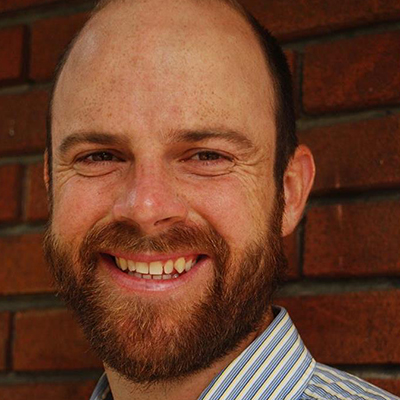
Abstract
Our understanding of how wildlife move within their environment generally stems from ecological concepts and theory related to habitat. As a result, many studies assume that wildlife behavior can be explained and predicted through habitat characteristics such as elevation, temperature, land cover type, and/or plant biomass. Yet, wildlife behaviors such as site fidelity (i.e., returning to the same location over and over again) are not well explained by habitat characteristics alone. There is mounting evidence that wildlife have strong memory capabilities and use their memorized information to guide how they move through their landscape and choose where to spend time. In this talk, I draw upon my research, in collaboration with colleagues and students, to assess the relative role of habitat versus memory in determining wildlife movement and migration. By monitoring individual animals for multiple years of their life and analyzing how they behave relative to their previous experience, our research clearly shows that habitat characteristics alone cannot explain wildlife use of the landscape. Without understanding an animal’s past experience and how they use that information to make future decisions, our ability to understand and predict animal behavior is limited. I then assess how an animal’s memory plays a strong role in how they respond to anthropogenic change such as energy development. Memory plays a pervasive role in wildlife behavior, and studying how animals use their memory, and its consequences, will shape our understanding of wildlife ecology into the future.
Speaker's Bio
Jerod is an Assistant Professor and the Knobloch Professor of Migration Ecology and Conservation within the Department of Zoology and Physiology at University of Wyoming. He is also a research associate with the Wyoming Migration Initiative. Jerod is a quantitative wildlife ecologist with broad interests in understanding how the movement of animals relates to environmental heterogeneity and change, and how these interactions scale to population- and landscape-level ecological processes. Jerod's specific research foci include movement and migration ecology, how cognition and innovation influence foraging behavior, and conservation and management of large mammals.
Video
How did a small UK NGO help shape European Union Agriculture Policy?
Main Speaker: John Carroll
Director of the School of Natural Resources , SNR | UNL
Date: 11/12/2020
Time: 2:00 PM
Location: Zoom Webinar (Check with Andy Little, alittle6@unl.edu for information)
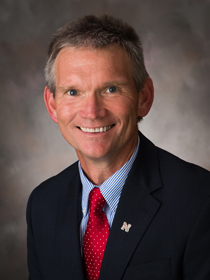
Video
Social behavior, spatial ecology, and population dynamics of top predators
Main Speaker: John Benson
Vertebrate Ecologist - Assistant Professor , UNL | School of Natural Resources
Date: 11/18/2020
Time: 3:30 PM
Location: Zoom Webinar
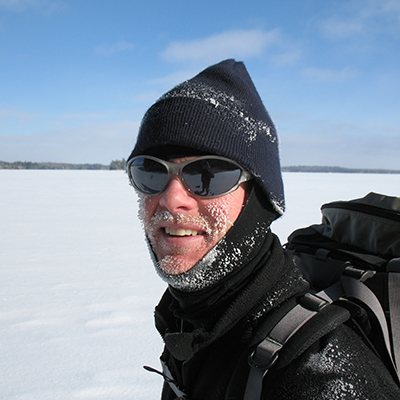
Abstract
Top predators are important components of ecological communities, and yet their populations are declining globally in response to a variety of human-caused stressors. My colleagues and I have been studying large carnivores across the world to understand their basic ecology, inform local management, and provide broader insight for conservation. I will begin by sharing some results from a global collaboration investigating drivers of cohesion, or the time that individuals spend together, within Canis (wolves, coyotes, dingoes, and jackals) social groups. Social cohesion in canids was strongly influenced by species, breeding status, season, and by interactions with other species – including humans. Second, I will discuss behavioral responses of mountain lions in greater Los Angeles to dramatic reductions in human activity associated with the California stay-at-home order during the Covid-19 pandemic. We found that mountain lions moved more efficiently with fewer humans on the landscape and relaxed avoidance of human infrastructure like trails and development. Our findings highlight that large carnivores likely suffer indirect costs associated with avoiding human activity during 'normal' periods. Finally, I share results from population modeling with mountain lions in two isolated, inbred populations in southern California where we simulated potential strategies for conserving small, isolated populations. Specifically, we evaluated the relative demographic and genetic benefits of a) immigration provided by highway crossing structures, b) translocation of animals, and c) artificial insemination. Collectively, our work highlights the many challenges facing top predators in a human-dominated world and provides potential solutions for their successful conservation.
Speaker's Bio
I have conducted research on wildlife populations across North America studying wolves, mountain lions, black bears, coyotes, moose, mule deer, bighorn sheep, white sharks, and many other species. I am motivated by a desire to inform conservation and management of wildlife populations and wild places – and by a fascination with the natural world. My work combines population, behavioral, molecular, and landscape ecology as I attempt to understand factors influencing individuals, populations, communities, and ecosystems. As a lab we conduct intensive field studies around the world, asking questions grounded in theoretical ecology and using quantitative approaches to achieve practical outcomes and contribute to greater understanding of basic ecology.
Video
Risk and capacity: conservation delivery to people whose primary goal is not conservation
Main Speaker: Larkin Powell
Professor of Conservation Biology/Animal Ecology , SNR \ UNL
Date: 12/9/2020
Time: 2:00 PM
Location: Zoom Webinar (Check with Andy Little, alittle6@unl.edu for information)
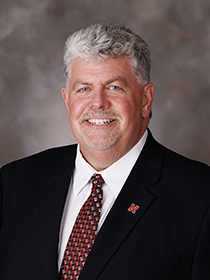
Video
Predicting Escherichia coli loads in cascading dams with machine learning: An integration of hydrometeorology, animal density and grazing pattern
Main Speaker: Olufemi Abimbola
Remote Sensing and Irrigation Specialist , UNL | School of Natural Resources
Date: 12/10/2020
Time: 4:00 PM
Location: https://unl.zoom.us/j/94145655124

Abstract
Accurate prediction of Escherichia coli contamination in surface waters is challenging due to considerable uncertainty in the physical, chemical and biological variables that control E. coli occurrence and sources in surface waters. This study proposes a novel approach by integrating hydro-climatic variables as well as animal density and grazing pattern in the feature selection modeling phase to increase E. coli prediction accuracy for two cascading dams at the US Meat Animal Research Center (USMARC), Nebraska. Predictive models were developed using regression techniques and an artificial neural network (ANN). Two adaptive neuro-fuzzy inference system (ANFIS) structures including subtractive clustering and fuzzy c-means (FCM) clustering were also used to develop models for predicting E. coli. The performances of the predictive models were evaluated and compared using root mean squared log error (RMSLE). Cross-validation and model performance results indicated that although the majority of models predicted E. coli accurately, ANFIS models resulted in fewer errors compared to the other models. The ANFIS models have the potential to be used to predict E. coli concentration for intervention plans and monitoring programs for cascading dams, and to implement effective best management practices for grazing and irrigation during the growing season.Speaker's Contact Information
Operational Updates to NDMC's Drought Risk Atlas – Climate Trends and Hydrology Data
Main Speaker: Curtis Riganti
Climatologist , High Plains Regional Climate Center
Date: 12/17/2020
Time: 4:00 PM
Location: https://unl.zoom.us/j/94145655124
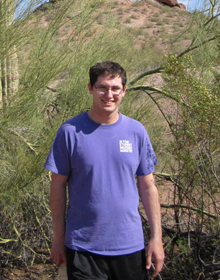
Abstract
The National Drought Mitigation Center’s Drought Risk Atlas has been updated to include climate trends and new hydrology data at National Weather Service (NWS) and U.S. Geological Survey (USGS) observing sites across the Lower 48. Long-term trends on meteorological drought indices such as the standardized precipitation index, and on frequency of precipitation events, were calculated and evaluated for statistical significance at the NWS sites. A standardized streamflow index was calculated for the USGS sites using both gamma and Tweedie distributions. Results from these two distributions were compared for goodness of fit to the observed streamflow distributions. Both of these datasets, and the trends calculated from them, are available in the Drought Risk Atlas, and will be updated annually.
Speaker's Contact Information
- criganti2@unl.edu
"Fight Back against the Zombies": Narratives and Norms in Climate Change Education
Main Speaker: Caitlin Kirby
Environmental Social Sciences Researcher , SNR | UNL
Date: 1/7/2021
Time: 4:00 PM
Location: https://unl.zoom.us/j/94145655124
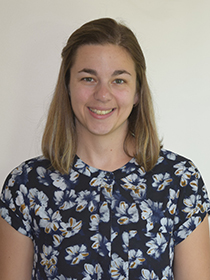
Abstract
Facts about climate change are often ineffective in impacting students’ climate change beliefs or environmentally-related behaviors. Multiple theories of environmental behavior utilize norms, both personal and social, in fostering environmental behavior change. Science fiction writers may also attempt to sway individuals’ perceptions of climate change through imaginings of a future impacted by climate change. The impact of these fictional narratives on individuals’ climate change perceptions and related behaviors has not been widely studied. We examined the impact of 1) personal versus social norms and 2) fiction versus non-fiction climate change readings on undergraduate students’ climate change perceptions and behaviors. Students (n=88) enrolled in an online general education science course completed a pre-survey, five intervention readings and writing responses, and a post-survey. On average, students’ climate change beliefs, risk perceptions, and behavioral intentions increased across all intervention groups. Trends in this exploratory research suggested that social norms and fiction writings are worth exploring as particularly effective ways to engage students in climate change discussions. Students’ written responses showed that they most often suggested vague behavior or solutions to environmental issues rather than specific behaviors. I will discuss the implications of these results in incorporating narratives, values, and norms in scientific courses on climate change and environmental issues.
Speaker's Contact Information
- ckirby@unl.edu
A Tour of Three Studies: How Can We Better Support Our Teaching Assistants?
Main Speaker: Cody Smith
Post-Doctoral Research Associate , SNR | UNL
Date: 1/14/2021
Time: 4:00 PM
Location: https://unl.zoom.us/j/94145655124
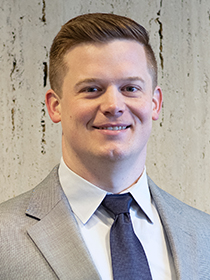
Abstract
Graduate teaching assistants (TAs) are responsible for the instruction of many introductory undergraduate science courses, and yet most TAs have little or no experience teaching or professional development (PD). In this seminar I will discuss the progression of three studies on TAs’ preparedness for their roles as instructors. First, I will describe a synthesis of the relatively sparse literature on PD for TAs and its comparison to a K-12 PD consensus model. This review led to the second study I will describe that developed a model of TA self-efficacy using survey and interview data. The results of this mixed-methods study showed that higher self-efficacy TAs are more outwardly focused on their impact on student learning, while lower self-efficacy TAs are more inwardly focused on their own selves, tasks and communication. These findings resulted in the third study of this seminar, which is a piloted exploration of the relationship between TAs’ self-efficacy and teaching approaches. In this study we analyzed survey data to determine whether self-efficacy is correlated with either student-centered or teacher-centered approaches to teaching. Implications for how these studies can inform TA PD opportunities will be discussed, as well as suggestions and goals for further research efforts.
Speaker's Contact Information
- cody.smith@unl.edu
Collaborations along Riverscapes: The Platte River Initiative
Main Speaker: Melissa Mosier
Platte River Program Manager , Audubon Nebraska
Date: 1/26/2021
Time: 2:00 PM
Location: Zoom Webinar (Check with Andy Little, alittle6@unl.edu for information)
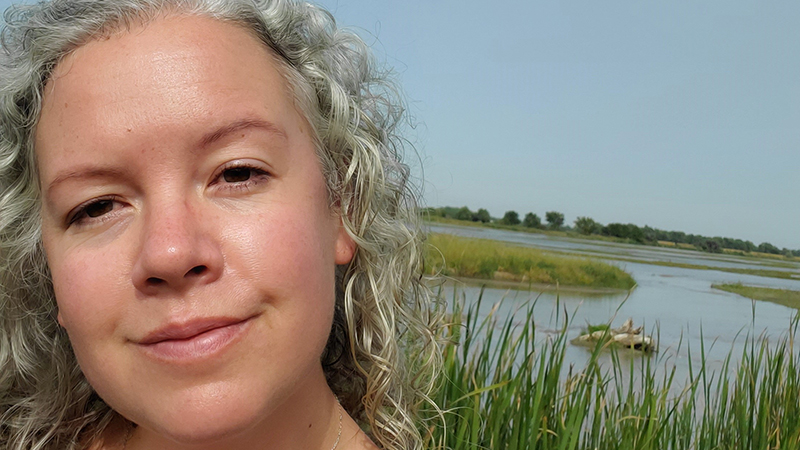
Speaker's Bio
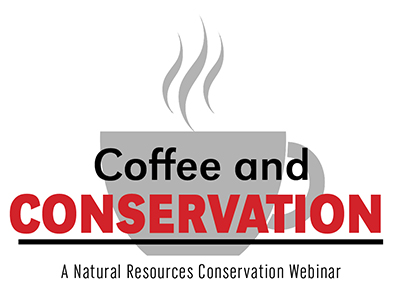
Video
Increasing Representation in Academic Environment One Step At A Time
Main Speaker: Renata Rimsaite
Water Markets Analyst , National Drought Mitigation Center
Date: 1/28/2021
Time: 4:00 PM
Location: https://unl.zoom.us/j/94145655124
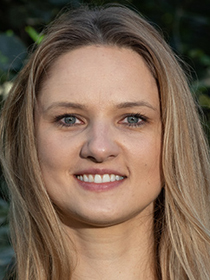
Abstract
As we are trying to work on our New Year resolutions, reflect on the wins and missed opportunities of the historically hard 2020, and become better versions of ourselves, we keep waking up in a society aching from injustice. Despite the overall cautious hope that perhaps we will start healing and focusing on unity, many in our society and community remain unheard. Challenges associated with inclusivity and diversity representation in many academic areas, including natural resource and agricultural sciences, stay persistent. The stagnation around solving the problem seems to be around the how, as the task is hard, complex, and uncomfortable. Splitting this task and focusing on the achievable next step might help the progress be less intimidating and maybe less impossible. In my talk, I will share my experiences from serving on the SNR diversity and inclusion committee (NRDI), including lessons learned from using a book club format to discuss the equity, inclusivity, and diversity issues with SNR students, postdocs, faculty, and staff. It would be great to use this opportunity on Thursday to have a discussion, to listen and learn from each other’s stories, and collect suggestions for the step that NRDI or each of us personally could take on next.Speaker's Contact Information
- rrimsaite@unl.edu
A Climatological Analysis of Convective Storm Initiation
Main Speaker: Stephen Shield
Date: 2/4/2021
Time: 4:00 PM
Location: https://unl.zoom.us/j/94145655124
Abstract
Convective storms were responsible for over 27 billion dollars in damage across North America in 2019 and are also the primary source of precipitation for the great plains of the United States. An import aspect of convective storms is their initiation, a process which is currently not well understood. Despite these facts, limited work has been done on convective storm initiation from a climatological perspective in part due to the difficulty in identifying convective storm initiation points. This research utilizes an algorithm called thunderstorm observation by radar (ThOR) to identify thunderstorm initiation points for a study domain in the Central Plains of the United States. Preliminary findings will be presented based on the 5+ years of convective storm initiation points identified thus far, with a focus on identifying climatologically favorable and unfavorable areas for convective storm initiation as well as areas that have the largest interannual variability in convective storm initiation.Sandhills Conservation: Successful Landowner-led Partnerships
Main Speaker: Ty Walker
Holistic Ranch Planning Coordinator , Sandhills Task Force
Date: 2/23/2021
Time: 2:00 PM
Location: Zoom Webinar (Check with Andy Little, alittle6@unl.edu for information)
Speaker's Bio

Video
Nebraska Invasive Species Program
Main Speaker: Allison Zach
Program Director , Nebraska Invasive Species Program
Date: 3/30/2021
Time: 2:00 PM
Location: Zoom Webinar (Check with Andy Little, alittle6@unl.edu for information)
Speaker's Bio

Speaker's Contact Information
- azach3@unl.edu
Video
Wetland Conservation in Nebraska: Beyond Ducks
Main Speaker: John Denton
Nebraska Manager of Conservation Programs , Ducks Unlimited, Inc.
Date: 4/27/2021
Time: 2:00 PM
Location: Zoom Webinar (Check with Andy Little, alittle6@unl.edu for information)
Abstract

Video
Diversifying a Corn and Soybean Desert
Main Speaker: Nathan Pflueger
Precision Ag Coordinator , Pheasants Forever
Date: 5/25/2021
Time: 2:00 PM
Location: Zoom Webinar (Check with Andy Little, alittle6@unl.edu for information)
Abstract

Video
A Future with Fire: The Rise of Prescribed Fire Usage in Nebraska and the Great Plains
Main Speaker: Brian Teeter
Prescribed Fire Coordinating Wildlife Biologist , Pheasants Forever
Date: 6/29/2021
Time: 2:00 PM
Location: Zoom Webinar (Check with Andy Little, alittle6@unl.edu for information)
Abstract

Video